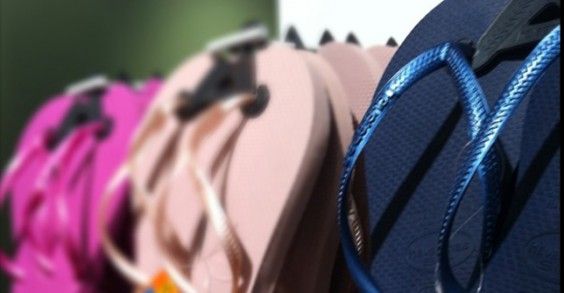From New York’s sweltering sidewalks to Brazil’s sandy beaches, there’s no sandal that signals summer quite like the flip-flop. But are these no-fuss flats as harmless as they seem? Studies show that despite their easy-breezy appeal, extended flip flop use can cause a range of physical ailments, ranging from plantar fasciitis and muscle soreness, to lower back pain. Not exactly what we signed up for, right?
Foot Action — Why It Matters
With the average American taking 5,117 steps a day — and experts recommending we take close to 5,000 more — our footwear is hardly an inconsequential choice
While a 2010 study suggests flip flops may actually decrease the load on our knees, it looks like there’s more risk in wearing the unsupportive shoes than benefits
Where Flip Flops Fall Flat — The Answer/Debate
Even though thong-like sandals provide some cushioning benefit over bare feet alone, studies show they’re responsible for throwing human gait kinetics out of whack. The body is forced to compensate, and what starts as stress on the arch, heel, and the rest of the foot can eventually manifest as soreness in the legs, hips, and lower back.
Among the most treated flip-flop induced injuries is plantar faciitis, an inflammation of the connective tissue along the bottom of the foot that affects close to two million Americans each year. This acute heel pain is most often sparked by all-day wear, with overweight or sedentary wearers even more susceptible since their arches are already under strain. Roughly 20 percent of sufferers develop a chronic condition, making plantar faciitis even worse.
But it’s not all doom and gloom on the flip-flop front. Here are a few tips to keep in mind when picking a pair to rock for the warm weather:
- Time it right. Replace flip-flops every three to four months, and only wear them for short periods of time.
- Opt for leather. The plastic ones may come in every color under the sun, but a soft, high-quality pair of leather flip-flops is less likely to cause irritation, including blisters.
- Find the right fit. Make sure the heel and toes don’t hang off the edges of the sandal and that when you bend the sandal from end to end it bends where the ball of the foot hits— not at the arch!
- Wear selectively. Beach walking, pool deck trolling, and a quick run to the grocery store? Yes. Soccer game, lawn mowing, and a five-mile hike? Not so much.
- Make it official. Look for sandals approved by the American Podiatric Medical Association. They have a whole handy-dandy list of the approved shoes (of all types), so search around and see if there’s something you dig!
- And whatever you do: Please, don’t wear them with socks.
Do flip flops give your feet summer troubles? And what do you do about it? Commiserate with us in the comments below!
Photo by Jordan Shakeshaft


